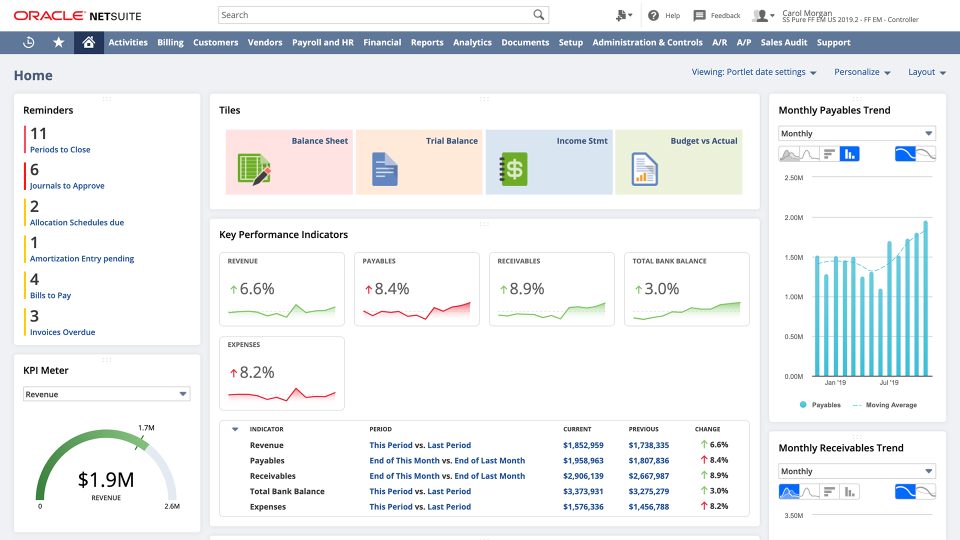Investing in a CRM system is a transformative step for any business seeking to optimize its operations and elevate customer relationships. Buy CRM software empowers you with the tools to centralize customer data, automate processes, and gain valuable insights that drive growth.
Embark on this comprehensive guide to discover the benefits, features, and best practices of CRM software, empowering your business to thrive in the modern digital landscape.
Understanding the Need for CRM Software
In today’s competitive business landscape, organizations face numerous challenges in managing customer relationships effectively. Without a robust CRM system in place, businesses often struggle to centralize customer data, track interactions, and gain valuable insights to enhance customer experiences.
Implementing a CRM solution can provide significant benefits to businesses. By streamlining business processes, improving communication, and enhancing customer service, CRM software empowers organizations to build stronger relationships with their customers and drive business growth.
Challenges Faced by Businesses Without a CRM System
- Fragmented Customer Data:Without a centralized system, customer data is often scattered across multiple spreadsheets, databases, and applications, making it difficult to access and manage.
- Inefficient Communication:Lack of a unified platform for communication leads to missed messages, duplicated efforts, and poor coordination among sales, marketing, and customer service teams.
- Limited Customer Insights:Without the ability to track customer interactions and analyze data, businesses have limited visibility into customer behavior, preferences, and trends.
- Poor Customer Service:Inefficient processes and lack of customer context hinder the ability of businesses to provide personalized and timely customer support.
Benefits of Implementing a CRM Solution
- Centralized Customer Data:CRM software provides a single, comprehensive view of all customer interactions, preferences, and history.
- Improved Communication:A centralized platform streamlines communication between teams, ensuring that everyone has access to the same information and updates.
- Enhanced Customer Insights:CRM systems track and analyze customer interactions, providing valuable insights into customer behavior, trends, and opportunities.
- Personalized Customer Experiences:By understanding customer preferences and history, businesses can tailor marketing campaigns, product recommendations, and customer support to meet individual needs.
- Increased Sales Productivity:CRM software automates tasks, provides real-time visibility into sales pipelines, and enables sales teams to prioritize leads and close deals faster.
- Improved Customer Retention:By providing personalized experiences and proactive support, CRM solutions help businesses build stronger customer relationships and reduce churn.
Examples of How CRM Software Can Streamline Business Processes
- Lead Management:CRM systems automate lead capture, qualification, and assignment, ensuring that leads are followed up on promptly and effectively.
- Sales Forecasting:CRM software provides real-time visibility into sales pipelines, enabling businesses to forecast revenue and adjust strategies accordingly.
- Customer Support:CRM solutions centralize customer support requests, track interactions, and provide agents with a complete view of customer history, enabling them to resolve issues quickly and efficiently.
- Marketing Automation:CRM systems integrate with marketing automation tools, enabling businesses to segment customers, personalize campaigns, and track results.
Evaluating CRM Software Options
Selecting the right CRM software is crucial for optimizing customer relationships and streamlining business processes. To make an informed decision, it’s essential to evaluate the available options carefully.
Key Features to Consider
When selecting a CRM system, consider the following key features:
- Contact management:Store and manage customer data, including contact information, preferences, and communication history.
- Sales management:Track sales pipelines, manage opportunities, and forecast revenue.
- Marketing automation:Automate marketing campaigns, segment customers, and nurture leads.
- Customer support:Provide a centralized platform for managing customer inquiries, complaints, and feedback.
- Reporting and analytics:Generate reports and analyze data to track performance, identify trends, and make informed decisions.
Types of CRM Software
CRM software comes in various types, each with its own advantages and disadvantages:
- Cloud-based CRM:Hosted on remote servers and accessed via the internet, offering scalability, flexibility, and low upfront costs.
- On-premise CRM:Installed on the company’s own servers, providing greater control and customization options but requiring significant upfront investment and IT resources.
- SaaS (Software-as-a-Service) CRM:A subscription-based model where the software is hosted and maintained by the vendor, offering cost-effectiveness and ease of use.
Industry-Specific Requirements
It’s important to consider industry-specific requirements when selecting a CRM system. For example, healthcare organizations may need specialized features for managing patient records, while e-commerce businesses may require robust order management capabilities. By aligning the CRM software with the unique needs of your industry, you can ensure it effectively supports your business processes.
CRM Software Implementation

Implementing a CRM system is a complex process that requires careful planning and execution. The following steps are involved:
- Planning:This phase involves defining the project scope, identifying stakeholders, and developing a project plan.
- Data migration:This phase involves migrating data from existing systems to the new CRM system. It is important to ensure that the data is clean and accurate.
- Configuration:This phase involves customizing the CRM system to meet the specific needs of the organization. This includes setting up user roles, workflows, and reports.
- Training:This phase involves training users on how to use the CRM system. It is important to ensure that users are comfortable with the system and understand its benefits.
- Go-live:This phase involves launching the CRM system and making it available to users. It is important to monitor the system closely during this phase and address any issues that arise.
- Ongoing support:This phase involves providing ongoing support to users and maintaining the CRM system. This includes providing technical support, training, and updates.
The timeline for a successful CRM implementation will vary depending on the size and complexity of the organization. However, most implementations can be completed within 6-12 months.
Best Practices for Data Migration
Data migration is a critical phase of the CRM implementation process. The following best practices should be followed to ensure a successful data migration:
- Plan the migration carefully:This includes identifying the data that needs to be migrated, the source systems, and the target CRM system.
- Clean the data before migration:This includes removing duplicate records, correcting errors, and ensuring that the data is in a consistent format.
- Test the migration process:This involves testing the migration process in a test environment before migrating the data to the live system.
- Monitor the migration process closely:This includes monitoring the migration process for errors and addressing any issues that arise.
Best Practices for User Adoption, Buy crm software
User adoption is critical to the success of any CRM implementation. The following best practices should be followed to ensure that users adopt the CRM system:
- Get users involved in the planning process:This helps to ensure that the CRM system meets the needs of users and that they are committed to using it.
- Provide training and support:This helps users to understand how to use the CRM system and to get the most out of it.
- Make the CRM system easy to use:This includes providing a user-friendly interface and making it easy for users to find the information they need.
- Communicate the benefits of the CRM system:This helps users to understand the benefits of using the CRM system and why it is important for them to use it.
Measuring CRM Software ROI: Buy Crm Software
Evaluating the return on investment (ROI) of a CRM software implementation is crucial for businesses to justify the expense and effort involved. By tracking key metrics and calculating the financial impact, organizations can determine the effectiveness of their CRM system and make informed decisions about future investments.
Identifying Metrics for Success
To measure the success of a CRM implementation, businesses should identify relevant metrics that align with their specific goals and objectives. Common metrics include:
- Sales growth
- Customer acquisition cost (CAC)
- Customer lifetime value (CLTV)
- Lead conversion rate
- Customer satisfaction
Calculating ROI
Calculating the ROI of CRM software involves comparing the benefits gained from the implementation against the costs incurred. Benefits can be quantified in terms of increased revenue, reduced costs, or improved efficiency. Costs include the initial investment in software, implementation, and ongoing maintenance.
ROI = (Benefits
Costs) / Costs
Case Studies
Numerous businesses have successfully leveraged CRM systems to achieve significant ROI. Here are a few examples:
- Salesforce:Salesforce reported a 226% ROI within the first year of implementation, with a 25% increase in sales and a 30% reduction in customer churn.
- HubSpot:HubSpot customers have reported an average ROI of 5:1, with increased lead generation and improved customer relationships.
- Zoho CRM:Zoho CRM has helped businesses achieve an average ROI of 300%, with increased sales productivity and improved customer satisfaction.
CRM Software Trends and Innovations

The CRM software industry is constantly evolving, with new trends and innovations emerging all the time. These trends are driven by the changing needs of businesses and the rapid advancements in technology.
One of the most significant trends in CRM software development is the increasing use of artificial intelligence (AI) and machine learning (ML). AI and ML can be used to automate tasks, improve data analysis, and provide personalized customer experiences.
AI and ML in CRM
- AI can be used to automate tasks such as lead scoring, customer segmentation, and email marketing.
- ML can be used to analyze data and identify patterns and trends. This information can be used to improve customer service, marketing campaigns, and product development.
Another trend in CRM software development is the increasing use of cloud-based solutions. Cloud-based CRM systems are more flexible and scalable than on-premises solutions, and they can be accessed from anywhere with an internet connection.
Cloud-Based CRM
- Cloud-based CRM systems are more flexible and scalable than on-premises solutions.
- Cloud-based CRM systems can be accessed from anywhere with an internet connection.
- Cloud-based CRM systems are typically more affordable than on-premises solutions.
The future of CRM technology is bright. AI, ML, and cloud-based solutions will continue to play a major role in the development of CRM software. These technologies will help businesses to improve customer service, marketing campaigns, and product development.
Wrap-Up

In the ever-evolving business world, CRM software stands as an indispensable tool for organizations striving for success. By implementing a robust CRM system, businesses can streamline operations, enhance customer engagement, and gain a competitive edge. Embrace the power of CRM technology and unlock the potential for exceptional growth and customer satisfaction.